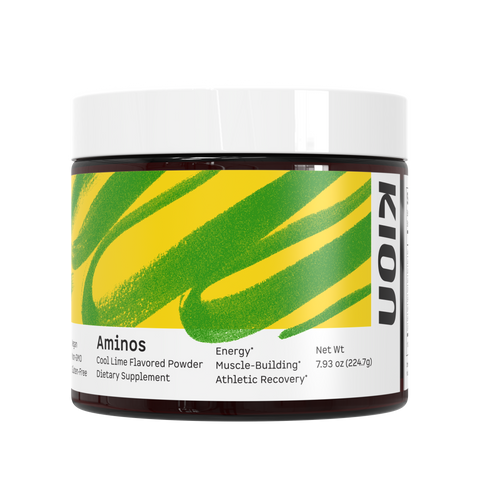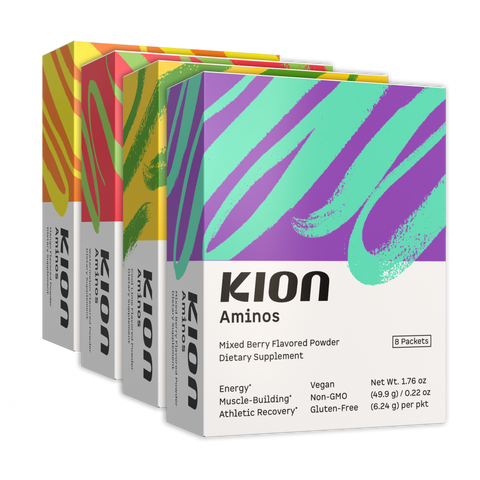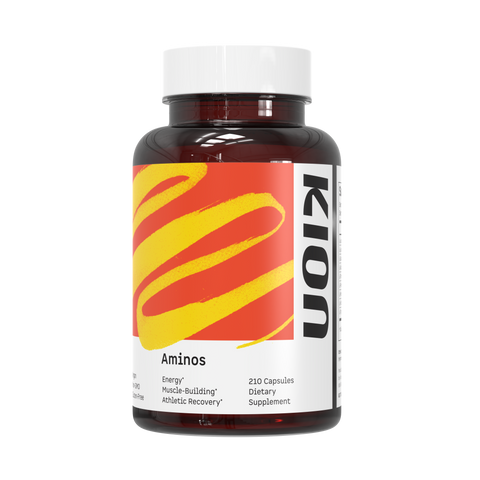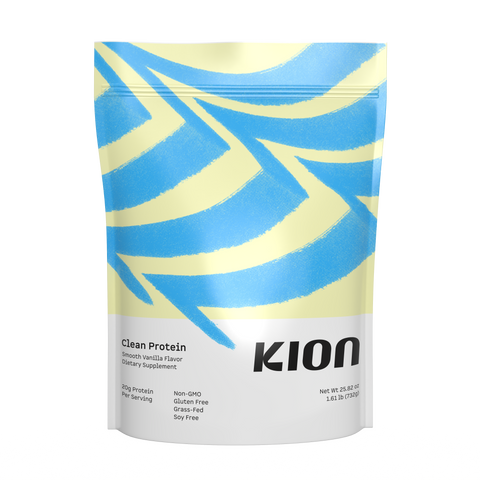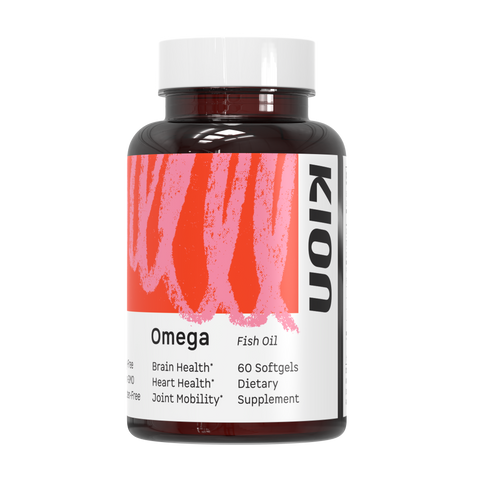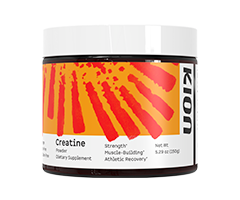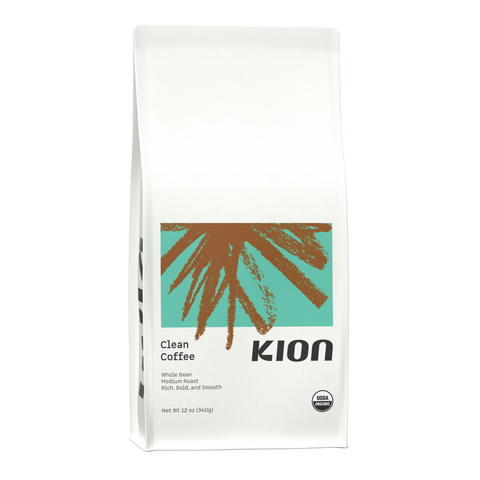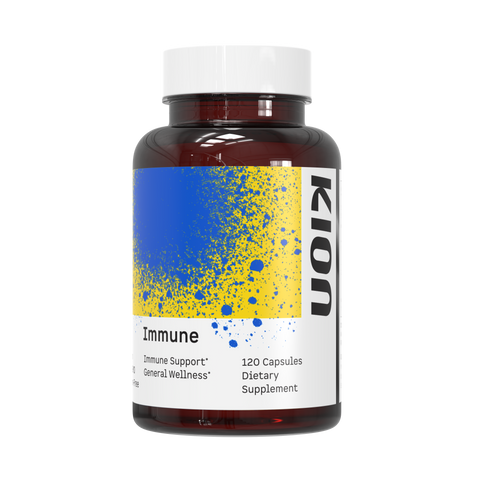Stress. It’s one of those joys in life we all experience, and simultaneously love to hate.
In times of pressure—like before a work deadline or during the heat of competition—stress can push us to perform at our peak.
But when not managed properly, it can build up over time and do some serious damage to our mental and physical health.
The key to using stress to your advantage is learning ways to manage it effectively, and therefore counteract potential negative health effects.
This article will cover six stress management techniques that are simple, effective - and most importantly - don’t require you to quit your job and move to a remote island (although, that would probably help too).
Is Stress Bad?
Stress, and what it does to your body, isn’t always bad. Here’s what happens:
In response to a stressor:
- Your HPA (hypothalamic-pituitary-adrenal) axis activates
- Deep in the brain, your hypothalamus talks to your pituitary gland, which sends a signal out of the brain and down to your adrenal glands.
- The adrenal glands then pump stress hormones into your bloodstream. Cortisol is the most noteworthy of these hormones and the one that most often gets a bad reputation.
However, cortisol isn’t the villain it's made out to be.
High-intensity exercise, sauna use, and fasting have all been shown to increase blood cortisol levels in the short term, but also tout benefits like improved blood pressure, cardiovascular health, and metabolism. [1][2][3]
These, along with many other uncomfortable activities are hormetic stressors: They induce an adaptive response that makes us stronger and more capable of handling similar stress in the future. [4]
In other words, the occasional activation of your stress response can be a good thing. Occasional being the keyword here.
Stress becomes a bully to your health when it is constantly present and keeps cortisol levels high all day. Some common problems associated with chronically high cortisol are:
- Diabetes, hypertension, and osteoporosis [5]
- Impaired cognition [6]
- Weight gain [7]
- Weakened immune system [8]
Fortunately, there are many natural stress management techniques available to help your body cope with the natural stress response. Here are six simple, proven methods and some quick tips on how to get started.
6 Stress Management Techniques
1. Breathwork
A restricted breathing pattern is one of the first things you’ll notice when you get stressed. Often this looks like fast, shallow breaths through your mouth and only into your chest (not your belly).
However, breath is one piece of the stress response you have complete control over.
Breathing exercises have been shown to improve levels of anxiety, lower blood pressure, lower heart rate, and improve cognitive function. [9][10][11][12]
Try This:
Box breathing is both a simple and powerful place to start. Here’s how to do it:
- Close your mouth and slowly breathe in through your nose for four counts
- Hold your breath for four seconds
- Then slowly exhale through your mouth for a count of four.
- Hold the exhale for another four counts.
Ideally, you'll do this for four minutes, but even just doing it a few times through will stimulate the body's parasympathetic nervous system and help you achieve a more relaxed state.
Check out this post for many more breathing techniques to lower stress.
2. Sleep
It's not exactly a secret that proper sleep is important for your overall health.
Getting in seven to nine unbroken hours each night has positive impacts on a variety of biomarkers and health outcomes, one of which is your body’s management of cortisol.
A natural cortisol rhythm looks like this:
- High levels upon waking (this makes you feel alert)
- Gradual decrease throughout the day
- Low levels at bedtime (this makes you feel sleepy)
- Gradual increase as the early morning approaches
Chronic stress disrupts this rhythm and leads to an alarming number of negative consequences, some of which include increased abdominal fat storage and weakening of the immune system. [13][14]
The worst part is that a messed up cortisol rhythm and improper sleep feed each other and lead to an exhausting downward spiral.
Your stress-filled day means your cortisol is sky-high before bed when it should be low, so good luck falling asleep.
Now since your sleep was crap, your cortisol couldn’t cycle properly overnight. When your alarm goes off, cortisol is low causing you to feel groggy and tired.
Work is piling up and being tired doesn’t help with productivity. This makes the stress build up even more.
Now it’s the end of the day and guess what, your cortisol is sky-high again. Prepare for another lame night of sleep.
It’s a vicious cycle that so many of us are trapped in, but luckily there are ways to significantly improve your sleep so you can regulate your stress response once again.
Try This:
If you find yourself stuck in the stress-sleep downward spiral, here are some basic tactics to get you back on track:
- Light hacks: Expose your skin and eyes to sunlight in the morning for 10-20 minutes. Avoid blue light exposure from your phone or other screens an hour before bed, or use blue-light blocking glasses if you have to.
- Wind down: Do a relaxing activity like reading a book, breathwork, or meditation before bed to allow your cortisol level to drop.
- Nutrition: If you don’t have the proper building blocks in your diet to make neurotransmitters required for deep sleep, you might have trouble falling or staying asleep. Consider something like Kion Aminos to give your neurotransmitters the fuel they need for good sleep.
If you're looking for more sleep tips, we’ve written a whole article on how to hack your environment for better sleep.
3. Meditation
Meditation has been shown to be effective for reducing unwanted stress. [15] In addition, other research on meditation practices indicate:
- Reduced inflammation [16]
- Improved attention span and cognitive processing [17]
- Increased density of gray matter in areas associated with learning and self-regulation [18]
- Benefits on-par with antidepressant medications [19]
- Improved pain tolerance [20]
- Slowing of telomere shortening, an indicator of biological aging [21]
The practice of meditation takes many different forms, however an overarching purpose is to bring awareness to your thoughts and emotions in the present moment in a calm, compassionate state.
Try This:
- Sit comfortably on the ground, a cushion, or a chair.
- Close your eyes.
- Set a timer. As little as five to ten minutes is a great starting point for beginners.
- Focus on your breath. Breathe through your nose as deeply and slowly as you comfortably can. Pick a physical point where you can feel your breath, like your nose or your abdomen, and focus your attention there. If you need something else to focus on, try silently counting your breaths, or say “in” on the inhale and “out” on the exhale to help you keep your attention glued there.
- Note distraction and re-focus. It’s okay for your attention to wander. The goal of meditation is not to avoid distraction altogether, but rather to acknowledge it and return your concentration to your point of focus.
- Once your time is up, take three deep breaths and experience an immediate sense of calm that you can take with you throughout the rest of the day.
4. Use Technology To Your Advantage
OK, so this one isn't exactly "natural", but certainly technology can definitely be an effective stress management technique.
However, it's important to use it wisely. Social media is notorious for its addictive qualities and the ability to make you feel bad about yourself. Listening to conventional news sources can paint a pretty bleak picture of the world and increase anxiety. [22]
If these weren’t reason enough to manage your time with tech, excessive screen time is linked to obesity. musculoskeletal problems, and hearing and vision damage. [23]
On the positive side, technology has brought us the ability to measure and track tons of health markers like heart rate variability, exercise, and sleep cycles that can be used to improve health. The internet brings you access to any bit of information you want in seconds (not to mention adorable cat videos).
Tech provides us pretty amazing tools, we just have to use them properly.
Try This:
Certain apps make stress relief easy. Some of our favorites include:
- Headspace and Ten Percent Happier: Two apps that include dozens of guided meditations that can help you manage stress (cool tech + meditation = winning!)
- Brain.fm: A cool technology that plays AI-generated music designed for the brain to improve focus, meditation, relaxation, naps and sleep within 15 minutes of use for boosting productivity.
- f.lux: A free computer app that can be installed on your laptop to reduce blue light exposure, which helps improves sleep quality and therefore has a positive effect on the body's stress response.
Simply download and stress less!
5. Adaptogenic Herbs
Adaptogenic herbs have the ability to normalize stress hormones, which means they can lower cortisol if it’s too high and raise it if it’s too low. They do this via regulation of the HPA axis. [24]
There are many different adaptogenic plants, and some of the well-studied ones include ashwagandha, schisandra, licorice root, ginseng, and reishi. Each one has slightly different mechanisms of action, and some are stimulating while others are more relaxing.
Try This:
If you’re feeling high-strung in the evenings, consider a reishi tea to settle your mind and body. Reishi is a mushroom known to support the body's stress response and promote a calmer state of mind.
6. Change Your Mindset
Did you know the way you think about stress changes the effect it has on your body?
Researchers have shown that if you believe stress has the ability to make you better, you’ll have a healthier stress response. [25]
In one study, individuals that were made aware of the benefits of stress reported better work performance and fewer symptoms of anxiety and depression compared to another group who focused on the negative effects of stress.
Viewing stress as a challenge rather than a threat is also associated with a faster acting stress response that switches on and off quickly. [26] Blood flow increases throughout the body so resources can be delivered effectively.
When a situation is seen as a threat, the stress response can linger around unnecessarily and the same increase in blood flow is not seen.
To change stress mindset, researchers simply showed ten minutes of video content to participants. When the videos showed the beneficial side of stress, people were able to take advantage of the benefits above. Negative content led to a worse stress response.
All it took was ten minutes (think about that next time you turn on the local news).
Try This:
If you’ve made it this far, you’ve already started changing your mindset by educating yourself on the benefits of stress.
Next time you encounter a stressful situation, you can use a stress management technique called "reframing". Here’s how:
- Observe the thoughts going on in your head.
- Understand that just because you think something doesn’t make it true.
- Analyze your negative thoughts and question whether they’re based in reality.
- Change your interpretation of the situation using more positive language. View it as a challenge and an opportunity for growth.
Summary
The world is stressful, but unless you plan on quitting your job and moving to a pristine Himalayan mountain top in the near future, stress isn't going anywhere.
It can also be a positive tool when managed properly.
You're now equipped with a handful of stress management techniques including breathwork, sleep hygiene, meditation, technology use, adaptogenic herbs, and mindset shifts.
So next time you start feeling stressed, think about making that stress your buddy with box breathing, better sleep, a five-minute meditation, some reishi, and a shift in thinking.
Scientific Research
Hill, E E et al. “Exercise and circulating cortisol levels: the intensity threshold effect.” Journal of endocrinological investigation vol. 31,7 (2008): 587-91. doi:10.1007/BF03345606
Pilch, Wanda et al. “Effect of a single finnish sauna session on white blood cell profile and cortisol levels in athletes and non-athletes.” Journal of human kinetics vol. 39 127-35. 31 Dec. 2013, doi:10.2478/hukin-2013-0075
Nakamura, Yuko et al. “Systematic review and meta-analysis reveals acutely elevated plasma cortisol following fasting but not less severe calorie restriction.” Stress (Amsterdam, Netherlands) vol. 19,2 (2016): 151-7. doi:10.3109/10253890.2015.1121984
Mattson, Mark P. “Hormesis defined.” Ageing research reviews vol. 7,1 (2008): 1-7. doi:10.1016/j.arr.2007.08.007
Chiodini, Iacopo. “Clinical review: Diagnosis and treatment of subclinical hypercortisolism.” The Journal of clinical endocrinology and metabolism vol. 96,5 (2011): 1223-36. doi:10.1210/jc.2010-2722
Het, S et al. “A meta-analytic review of the effects of acute cortisol administration on human memory.” Psychoneuroendocrinology vol. 30,8 (2005): 771-84. doi:10.1016/j.psyneuen.2005.03.005
Vicennati, Valentina et al. “Stress-related development of obesity and cortisol in women.” Obesity (Silver Spring, Md.) vol. 17,9 (2009): 1678-83. doi:10.1038/oby.2009.76
Buford, Thomas W, and Darryn S Willoughby. “Impact of DHEA(S) and cortisol on immune function in aging: a brief review.” Applied physiology, nutrition, and metabolism = Physiologie appliquee, nutrition et metabolisme vol. 33,3 (2008): 429-33. doi:10.1139/H08-013
Cho, Hyunju et al. “The Effectiveness of Daily Mindful Breathing Practices on Test Anxiety of Students.” PloS one vol. 11,10 e0164822. 20 Oct. 2016, doi:10.1371/journal.pone.0164822
Wang, Shu-Zhen et al. “Effect of slow abdominal breathing combined with biofeedback on blood pressure and heart rate variability in prehypertension.” Journal of alternative and complementary medicine (New York, N.Y.) vol. 16,10 (2010): 1039-45. doi:10.1089/acm.2009.0577
Steffen, Patrick R et al. “The Impact of Resonance Frequency Breathing on Measures of Heart Rate Variability, Blood Pressure, and Mood.” Frontiers in public health vol. 5 222. 25 Aug. 2017, doi:10.3389/fpubh.2017.00222
Zelano, Christina & Jiang, Heidi & Zhou, Guangyu & Arora, Nikita & Schuele, Stephan & Rosenow, Joshua & Gottfried, Jay. (2016). Nasal Respiration Entrains Human Limbic Oscillations and Modulates Cognitive Function. Journal of Neuroscience. 36. 12448-12467. 10.1523/JNEUROSCI.2586-16.2016.
Dallman, Mary F et al. “Minireview: glucocorticoids--food intake, abdominal obesity, and wealthy nations in 2004.” Endocrinology vol. 145,6 (2004): 2633-8. doi:10.1210/en.2004-0037
Vitlic, Ana et al. “Stress, ageing and their influence on functional, cellular and molecular aspects of the immune system.” Age (Dordrecht, Netherlands) vol. 36,3 (2014): 9631. doi:10.1007/s11357-014-9631-6
Goyal, Madhav et al. “Meditation programs for psychological stress and well-being: a systematic review and meta-analysis.” JAMA internal medicine vol. 174,3 (2014): 357-68. doi:10.1001/jamainternmed.2013.13018
Rosenkranz, Melissa A et al. “A comparison of mindfulness-based stress reduction and an active control in modulation of neurogenic inflammation.” Brain, behavior, and immunity vol. 27,1 (2013): 174-84. doi:10.1016/j.bbi.2012.10.013
Kilpatrick, Lisa A et al. “Impact of Mindfulness-Based Stress Reduction training on intrinsic brain connectivity.” NeuroImage vol. 56,1 (2011): 290-8. doi:10.1016/j.neuroimage.2011.02.034
Hölzel, Britta K et al. “Mindfulness practice leads to increases in regional brain gray matter density.” Psychiatry research vol. 191,1 (2011): 36-43. doi:10.1016/j.pscychresns.2010.08.006
Segal, Zindel V et al. “Antidepressant monotherapy vs sequential pharmacotherapy and mindfulness-based cognitive therapy, or placebo, for relapse prophylaxis in recurrent depression.” Archives of general psychiatry vol. 67,12 (2010): 1256-64. doi:10.1001/archgenpsychiatry.2010.168
Zeidan, Fadel et al. “The effects of brief mindfulness meditation training on experimentally induced pain.” The journal of pain : official journal of the American Pain Society vol. 11,3 (2010): 199-209. doi:10.1016/j.jpain.2009.07.015
Epel, Elissa et al. “Can meditation slow rate of cellular aging? Cognitive stress, mindfulness, and telomeres.” Annals of the New York Academy of Sciences vol. 1172 (2009): 34-53. doi:10.1111/j.1749-6632.2009.04414.x
Szabo, Attila, and Katey L Hopkinson. “Negative psychological effects of watching the news in the television: relaxation or another intervention may be needed to buffer them!.” International journal of behavioral medicine vol. 14,2 (2007): 57-62. doi:10.1007/BF03004169
“Public Health Implications of Excessive Use of the Internet, Computers, Smartphones and Similar Electronic Devices.” World Health Organization, World Health Organization, www.who.int/publications/i/item/9789241509367.
Panossian, Alexander, and Georg Wikman. “Effects of Adaptogens on the Central Nervous System and the Molecular Mechanisms Associated with Their Stress-Protective Activity.” Pharmaceuticals (Basel, Switzerland) vol. 3,1 188-224. 19 Jan. 2010, doi:10.3390/ph3010188
Crum, Alia J et al. “Rethinking stress: the role of mindsets in determining the stress response.” Journal of personality and social psychology vol. 104,4 (2013): 716-33. doi:10.1037/a0031201
Jamieson, Jeremy P et al. “Optimizing stress responses with reappraisal and mindset interventions: an integrated model.” Anxiety, stress, and coping vol. 31,3 (2018): 245-261. doi:10.1080/10615806.2018.1442615
* These statements have not been evaluated by the Food and Drug Administration. This product is not intended to diagnose, treat, cure, or prevent any disease.
© 2022 Kion. All rights reserved.



